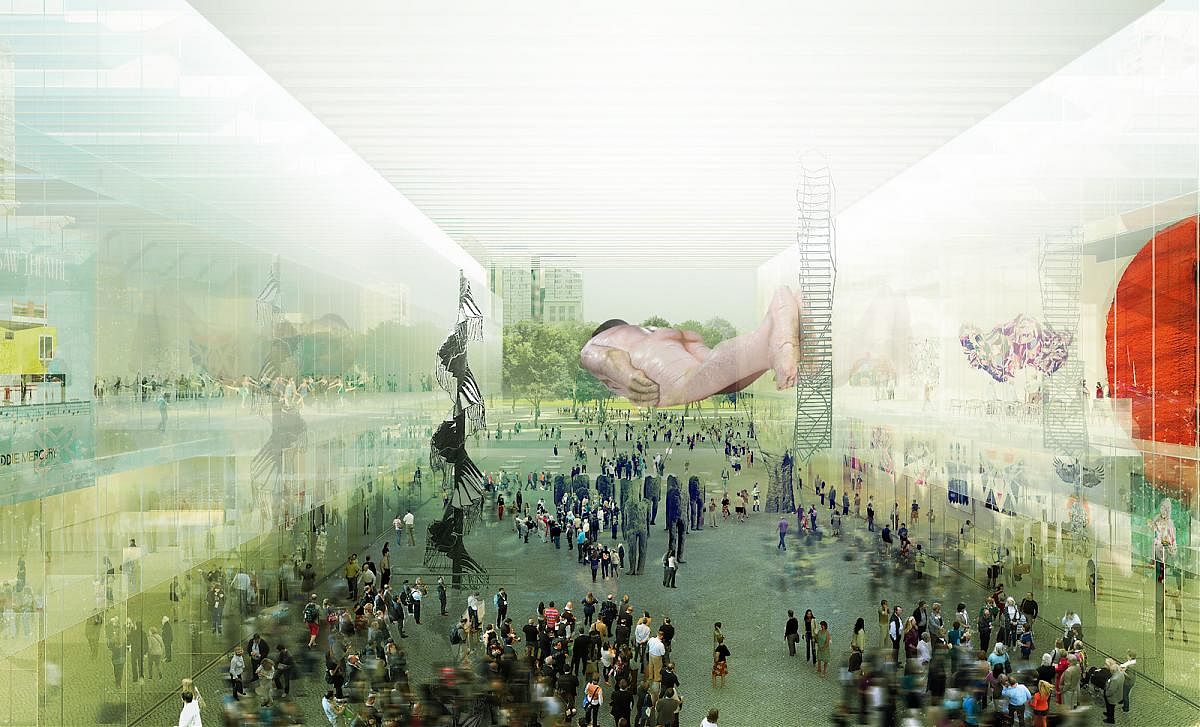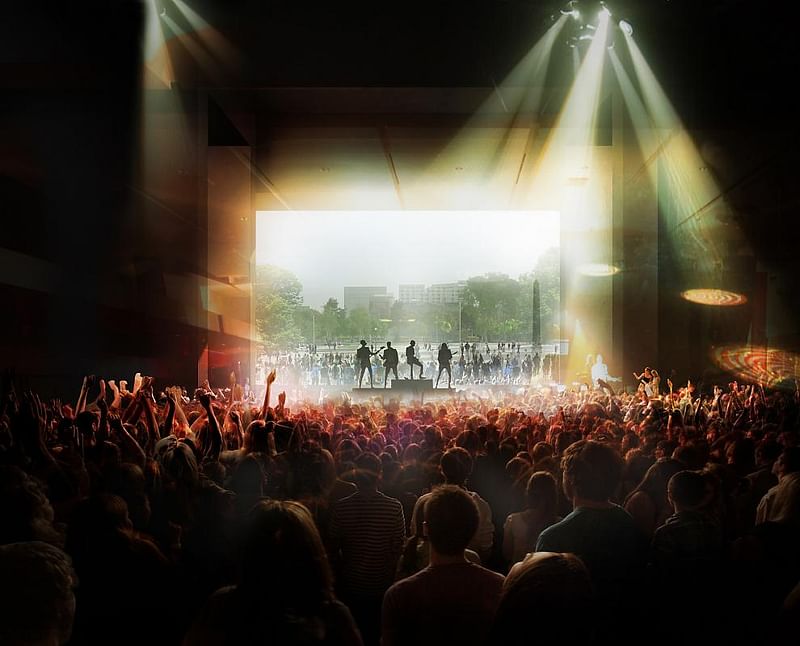Thomas Phifer and Partners chosen to design new museum and theater cultural complex in Warsaw
By Bustler Editors|
Thursday, Jul 31, 2014

Related
In their third attempt to select an architect, The Museum of Modern Art in Warsaw and the TR Warszawa Theatre announced today that Thomas Phifer and Partners will design the new building complex to house both institutions at Defilad Square at the Palace of Culture and Science. Featuring a roofed public square to connect the two institutions, the new building will be the first of its kind in Warsaw, Poland.
After multiple consultation meetings with Museum and Theatre representatives during the two-stage selection process, Thomas Phifer and Partners' proposal was chosen out of 12 bidding architecture firms. Participating bidders included Henning Larsen Architects, UNStudio, Foster + Partners, and of course, many Polish studios. (Full list below.)
Starting this September, the winning firm will work with the Museum and the Theatre to further develop the current design concept. The design process is scheduled for completion in mid-2016, while the project will be constructed by the end of 2019.
Project description:
"In its assessment, the Selection Committee came to the conclusion that the studio which exhibited the best understanding on the functional programme of the Museum and the Theatre as presented in their offer was that of Thomas Phifer and Partners from New York. It is this proposal that proved to be the most city-generating and it is with this bidder that the Museum shall conclude a contract for the design of the Museum and Theatre complex.
Embarking on this joint project with the selected architect, both the Museum and the Theatre are convinced that thanks to the proposed concept, the architect’s vision, as well as the entire experience gathered thus far, it will finally be possible to create a complex of edifices which will transform the barren and unfriendly area in the very heart of the country into a vibrant space pulsating with culture and the everyday hustle and bustle of a big city, meeting the needs and expectations that Poles have of their capital in the third decade of the country’s independence and the second decade of the 21st century."

"The buildings, though partly connected at the underground level, will be separate: the Museum is to be located in the eastern part of the plot of land, along Marszałkowska Street, while the Theatre is to occupy the western side, in the vicinity of the right wing of the Palace of Culture. At the heart of the entire complex lies a roofed city square, linking the two institutions with public space and with each other, but also serving as a pedestrian passage between Park Świętokrzyski (and the Świętokrzyska metro station) and Plac Defilad with the Palace of Culture.
The multifunctional space of the square is to be the venue of public art projects, concerts or outdoor performances but, first and foremost, a place of free social interaction. The space between the Museum and the Theatre is to be at a human scale, a smooth transition between the monumental Plac Defilad and the tree-covered Park Świętokrzyski, between the exterior of the buildings and their interiors. Since the architect is also required to propose a general concept of Plac Defilad and the park adjacent to the Museum and Theatre complex, the two institutions are planning, together with the architect, to conduct public consultations regarding the possible scenarios of the use of the surrounding space."

"In his design, the architect has followed the motto that it is 'a building that reveals all it has'. According to this concept proposed by Thomas Phifer, if the two institutions are about showing – visual and performative art – their architecture should reflect this principle and reveal to the passers-by, the thousands of random pedestrians, what is happening inside. In the case of TR Warszawa Theatre, one of the biggest attractions will be one of the stages opened up to Plan Defilad, where the activities on stage will be watched from the inside, but also from the outside. The surroundings of the building will therefore be either a stage set or the auditorium.
Furthermore, some of the rehearsal spaces on the side of the Theatre and the backspace of the Museum will have glass walls, so that the institutions can look at each other and at the people outside, in the square, in the park, or on the higher floors of the two buildings. The architect is very keen to make use of natural light, which is extremely important particularly for the exhibition space of the Museum. Thomas Phifer’s architecture is light and open, hence its public perception is positive. He describes his architecture as optimistic, built with light and accessible."

"The architect’s understanding of such ideas as openness, transparency, as well as the convincing simplicity of the solutions proposed, give hope that these buildings, so long awaited, will finally become a reality – their construction is to be completed by the end of 2019. By means of the values they communicate and the attitudes they reinforce, standing in stark contrast to the monumental character and the architectural vanity of the neighbouring Palace of Culture, they will become the symbol of contemporary Warsaw."

Participants:
- BLOND&ROUX architectes [France]
- Fiszer Atelier 41 Warszawa [Poland]
- Foster + Partners Limited [United Kingdom]
- Inżbud Tomasz Trepka [Poland]
- JSK Architekci /nsMoonStudio [Poland]
- Biuro Architektoniczne Kaczmarczyk [Poland]
- Henning Larsen Architects A/S [Denmark]
- PAS PROJEKT ARCHI STUDIO [Poland]
- Thomas Phifer and Partners [United States]
- PROCHEM S.A. [Poland]
- UNStudio [The Netherlands]
- WXCA/WXCA Group [Poland]
Images courtesy of the Museum of Modern Art in Warsaw and the TR Warszawa Theatre.

Share
0 Comments
Comment as :